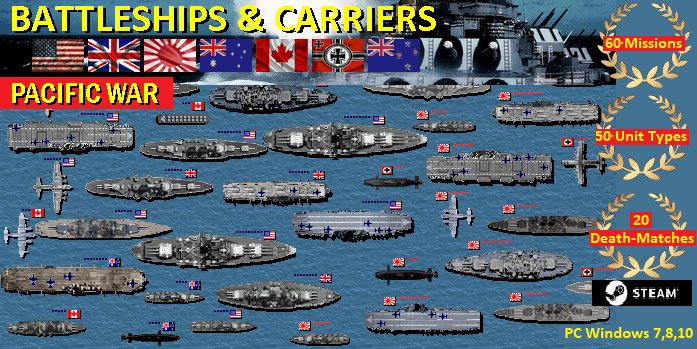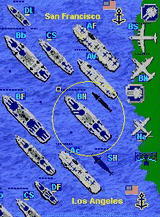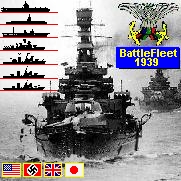|
The Gallipoli Campaign took place
at Gallipoli peninsula in Turkey from 25 April 1915 to 9
January 1916, during the First World War. A joint British
Empire and French operation was mounted to capture the
Ottoman capital of Constantinople, and secure a sea route
to Russia. The attempt failed, with heavy casualties on
both sides. n Turkey, the campaign is known as the Canakkale Savaslari, after the province of Canakkale. In the United Kingdom, it is called the Dardanelles Campaign or Gallipoli. In France it is called Les Dardanelles. In Australia,New Zealand and Newfoundland,[8] it is known as the Gallipoli Campaign or simply as Gallipoli. It is also known as the Battle of Gallipoli. |
|||||||||||||||||||||||||||||||||||||
| WW1 World War 1
1914-1918 List of Allies World War 1 Allies WW1 Battle of Port Arthur Battle of Jutland Skagerrak WW2 World War 2 List of Allies World WW 2 Allies WW2 WW2_Timeline List_of_wars List of military aircraft WW1 Submarine
|
Battle of Gallipoli - World War 1
|
|||||||||||||||||||||||||||||||||||||
| Battle of Gallipoli | |||||||||||||||||
|---|---|---|---|---|---|---|---|---|---|---|---|---|---|---|---|---|---|
| Conflict | WW1 - World War I | ||||||||||||||||
| Date | February 19, 1915 - January 8, 1916 | ||||||||||||||||
| Place | Gallipoli peninsula, Turkey | ||||||||||||||||
| Result | Turkish victory | ||||||||||||||||
|
|||||||||||||||||
Battle of
Gallipoli — WW1
Prelude
Russia, one of the Allied powers during the war,
had problems with its supply routes over sea. The Baltic
Sea was locked by the German navy, while the Black Sea's
only entrance was through the Bosporus, which was
controlled by the Ottoman Empire.
By late 1914, the Western Front, in
France and Belgium, had effectively become fixed. A new
front was desperately needed. Also, the Allies hoped that
an attack on the Ottomans would draw Bulgaria and Greece
into the war on Allied side.
A first proposal to attack Turkey
had already been suggested by a French minister in
November 1914, but it was not supported. Later that
month, First Lord of the Admiralty, Winston Churchill.
put forward his first plans for a naval attack on the
Dardanelles. A plan for an attack and invasion of the
Gallipoli peninsula was eventually approved by the
British cabinet in January 1915. The British Minister of
War, Lord Kitchener appointed General Sir Ian Hamilton to
command the Mediterranean Expeditionary Force that was to
carry out the mission.
An overview of the Gallipoli Peninsula. The dotted lines
approximately mark the furthest advance of Allied Forces.
Naval attacks
On February 19, the first attack on the
Dardanelles began when a large fleet of British and
French vessels, including the British battleship HMS
Queen Elizabeth, bombarded Turkish artillery along the
coast.
Although the attack was politically successful - Bulgaria
stopped negotiations with Germany, Greece offered
support, and Italy also seemed keen to enter the war on
Allied side - the military effect was very small.
Continued bombardments and landings on February 25 also
proved unsuccessful.
A new attack was launched on March 18, targeted at the
narrowest point of the Dardanelles where the straits were
just a mile wide. A massive fleet containing no less than
16 battleships was initially successful, eliminating many
Turkish artillery batteries. However, an undetected
minefield laid along the Asian shore by the Turkish
minelayer Nusret, sunk or damaged a number of ships as
they turned about. Three battleships were sunk; the
British HMS Ocean and HMS Irresistible, and the French
Bouvet, while the battlecruiser HMS Inflexible and the
French battleships Suffren and Gaulois were badly
damaged.
Invasion
After the failure of the naval attacks, it had
become clear that ground troops were necessary to
eliminate the Turkish mobile artillery. This would allow
mine sweepers to clear the waters for the larger vessels.
In early 1915, Australian and New Zealand volunteer
soldiers were encamped in Egypt, undergoing training
prior to being sent to France. The infantry were formed
into the Australian and New Zealand Army Corps (ANZAC)
which comprised the Australian 1st Division and the New
Zealand and Australian Division. General Hamilton also
had the British 29th Division, the Royal Naval Division
(RND) and the French Corps exp?ditionnaire d'Orient
under his command. Hamilton's invasion force was opposed
by the Turkish 5th Army, under the command of a German,
General Otto Liman von Sanders, comprising 6 divisions
totalling 84,000 men, which had to defend both shores of
the Dardanelles.
The invasion plan of 25 April, 1915 was for the 29th
Division to land at Helles on the tip of the peninsula
and then advance upon the forts at Kilitbahir. The Anzacs
were to land north of Gaba Tepe on the Aegean coast from
where they could advance across the peninsula and prevent
retreat from or reinforcement of Kilitbahir. The French
made a diversionary landing at Kum Kale which lies at the
entrance to the Dardanelles on the Asian shore. There was
also a one-man diversion by Bernard Freyberg of the RND
at Bulair on the neck of the peninsula.
|
||||
Anzac
The Anzac covering force, the 3rd Brigade of the
Australian 1st Division, began to go ashore shortly
before dawn at 4.30 am on April 25. The intended landing
zone was a broad front centered about a mile north of
Gaba Tepe on a stretch of coast dubbed "Brighton
Beach". For reasons that are debated to this day,
the landing went awry and the boats concentrated about a
mile and a half further north than intended in a shallow,
nameless cove between Ari Burnu to the north and Hell
Spit to the south.
The Anzacs were confronted by a treacherous, confusing
tangle of ravines and spurs that descended from the
heights of the Sari Bair range to the sea. At first the
landing was only lightly opposed by scattered Turkish
units however Mustafa Kemal, commanding the 19th
Division, perceiving the threat posed by the landings,
rushed reinforcements to the area in what became a race
for the high ground.
The contest for the heights was decided on the main ridge
line where the Anzacs and Turks fought over a knoll
called Baby 700. The position changed hands a number of
times on the first day before the Turks, having the
advantage of the higher ground on Battleship Hill, took
final possession which they never relinquished. Once the
Anzac advance was checked, the Turks counter-attacked,
trying to force the invaders back to the shore, but
failed to dislodge them from the foothold they had
gained. A trench perimeter quickly developed and a bloody
stalemate ensued until August.
Helles
The Helles landing was to be made by the 29th
Division under the command of Major General Aylmer
Hunter-Weston, on fives beaches in an arc about the tip
of the peninsula, designated from east to west as S, V,
W, X and Y beach.
At the extremities of the arc, on S, X and Y beaches,
there was little opposition but the opportunity was not
exploited. The commander of the Y Beach landing was able
to walk unopposed to within 500 metres of Krithia
village, which was deserted. The British never got so
close again. Y Beach was eventually evacuated as Turkish
reinforcements arrived.
The main landings were made at V Beach, beneath the old
Seddulbahir fortress, and at W Beach, a short distance to
the west on the other side of the Helles headland.
At V Beach the covering force from the Hampshire Regiment
and the Royal Munster Fusiliers was landed from a
converted collier, the River Clyde, which was run aground
beneath the fortress so that the troops could disembark
directly via ramps to the shore. Machine guns were
mounted on the forecastle of the ship to provide covering
fire. The Royal Dublin Fusiliers would land at V Beach
from open boats. At W Beach the Lancashire Fusiliers also
landed in open boats on a small beach overlooked by dunes
and obstructed with barbed wire. At both beaches the
British infantry were massacred by the Turkish defenders.
The troops emerging one by one from the sally ports on
the River Clyde presented perfect targets to the machine
guns in the Seddulbahir fort.
As at Anzac, the Turkish defenders were too few to force
the British off the beach. At W Beach, thereafter known
as Lancashire Landing, the Lancashires were able to
overwhelm the defences despite their dreadful losses, 600
killed or wounded out of a total strength of 1000. The
battalions that landed at V Beach suffered about 70%
casualties. Five awards of the Victoria Cross were made
amongst the Lancashires at W Beach, six Victoria Crosses
were awarded amongst the infantry and sailors at the V
Beach landing.
The Early Battles
On the afternoon of April 27, Kemal launched a
concerted attack to drive the Anzacs back to the beach.
With the support of naval gunfire, the Turks were held
off throughout the night.
On April 28, the British, now supported by the French on
the right of the line, intended to capture Krithia in
what became known as the 1st Battle of Krithia. The plan
of attack was overly complex and poorly communicated to
the commanders in the field. The troops of the 29th
Division were still exhausted and unnerved by the battle
for the beaches and for Seddulbahir village, captured
after heavy fighting on the 26th. The attack ground to a
halt around 6pm with a gain of some ground but the
objective of Krithia village was not reached. The Allies
put 13,500 men into the fight and suffered 3000
casualties in one day. After the battle, the Allied
trenches lay about halfway between the Helles headland
and Krithia village. With Turkish oppositioning
stiffening by the day, the opportunity for the
anticipated swift victory on the peninsula was
disappearing. Helles, like Anzac, became a siege. Strong
Turkish counter-attacks on the nights of May 1 and May 3
were repulsed despite breaking through the French
defences.
The first attempt at an offensive at Anzac took place on
the evening of May 2 when New Zealand and Australian
Division commander, General Godley, ordered the
Australian 4th Brigade, commanded by General John Monash,
and the New Zealand Infantry Brigade, to attack from
Russell's Top and Quinn's Post towards Baby 700. The
troops advanced a short distance during the night and
tried to dig in to hold their gains but were forced to
retreat by the night of May 3, having suffered about 1000
casualties.
Believing Anzac to be secure, Hamilton moved two
brigades, the Australian 2nd Infantry Brigade and the New
Zealand Infantry Brigade, to the Helles front to take
part in the Second Battle of Krithia on May 8. This was
the first major assault at Helles and gained about a
quarter of a mile on a wide front at the now customary
enormous cost in casualties.
The Turks launched a major assault at Anzac on May 19.
The plan was to simply overwhelm the defenders by sheer
weight of numbers — 30 to 40,000 Turks attacked
10,000 Australians and New Zealanders — but the
attack was held off and the Turkish casualties were so
severe that a truce was organised for May 24 in order to
bury the masses of dead lying in no-mans land.
In the Third Battle of Krithia on June 4 all thought of a
decisive breakthrough was gone and the plans for battle
had reverted to trench warfare with objectives being
measured in hundreds of metres. Casualties ran to around
25% for both sides; the British suffering 4500 from an
attacking force of 20,000.
In June, a fresh division, the 52nd Division, began to
land at Helles in time to participate in the last of the
major Helles battles, the Battle of Gully Ravine which
was launched on June 28. This battle advanced the British
line along the left (Aegean) flank of the battlefield.
August Offensive
The repeated failure of the Allies to capture Krithia or
make any progress on the Helles front led Hamilton to
pursue a new plan for the campaign which resulted in what
is now called the Battle of Sari Bair. On the night of
August 6 a fresh landing of two infantry divisions was to
be made at Suvla Bay, 3 miles north of Anzac. Meanwhile
at Anzac a strong assault would be made on the Sari Bair
range by breaking out into the rough and thinly defended
terrain north of the Anzac perimeter.
The landing at Suvla was only lightly opposed but the
British commander, General Sir Frederick Stopford, had so
diluted his early objectives that little more than the
beach was seized. Once again the Turks were able to win
the race for the high ground of the Anafarta Hills
thereby rendering the Suvla front another case of static
trench warfare.
The attack at Anzac was preceded on the evening of August
6 by a diversionary assault on the Turkish trenches at
Lone Pine by the infantry brigades of the Australian 1st
Division. This attack was a rare victory for the Anzacs.
However, the main assault aimed at the peaks of Chunuk
Bair and Hill 971 was less successful.
The force striking for the nearer peak of Chunuk Bair
comprised the New Zealand Infantry Brigade. It came
within 500 metres of the peak by dawn on August 7 but was
not able to seize the summit until the following night.
This delay had fatal consequences for another supporting
attack on the morning of August 7; that of the Australian
3rd Light Horse Brigade at The Nek which was to coincide
with the New Zealanders attacking back down from Chunuk
Bair against the rear of the old Turkish trenches.
The attack on Hill 971 never eventuated. The attacking
force of the Australian 4th Infantry Brigade (Monash),
and an Indian Brigade, was defeated by the terrain and
became lost during the night. All subsequent attempts to
resume the attack were easily repulsed by the Turkish
defenders at great cost to the Allies.
The Suvla landing was reinforced by the arrival of the
British 53rd and 54th Divisions. The unfortunate 29th
Division was also shifted from Helles to Suvla for one
more push. The final British attempt to resuscitate the
offensive came on August 21 with attacks at Scimitar Hill
and Hill 60. Control of these hills would have united the
Anzac and Suvla fronts but neither battle achieved
success. When fighting at Hill 60 ceased on August 29,
the battle for the Sari Bair heights, and indeed the
battle for the peninsula, was effectively over.
Casualties
Gallipoli casualties (compiled from various sources)
(Nation - Died - Wounded -Total)
Australia 8,709 19,441 28,150
New Zealand 2,701 4,852 7,553
Britain 21,255 52,230 73,485
France 10,000 17,000 27,000
India 1,358 3,421 4,779
Newfoundland 49 93 142
Total Allies 44,072 97,037 141,109
Turkey 86,692 164,617 251,309
Amongst the dead of the battle was the brilliant young
chemist Henry Moseley. Also the poet Rupert Brooke,
serving with the Royal Naval Division, died shortly
before the invasion.
Text is available under the terms of the GNU Free Documentation License
In
Australia and New Zealand, the campaign was the first
major battle undertaken by a joint military formation,
the Australian and New Zealand Army Corps (ANZAC), and is
often considered to mark the birth of national
consciousness in both of these countries. Anzac Day (25
April) remains the most significant commemoration of
military casualties and veterans in Australia and New
Zealand, surpassing Armistice Day/Remembrance Day.
Important Battles of the First World War
Mons
August, 1914 - Tannenberg
August, 1914 -Heligoland
August, 1914 - Marne
September, 1914 - Aisne
September, 1914 - Albert
September, 1914 - Arras
October, 1914 - Ypres
November, 1914 - Neuve Chapelle
March, 1915 - Gallipoli Campaign
March, 1915 - Artois
May, 1915 Isonzo
June, 1915 - Artois-Loos
September, 1915 - Verdun
February - December, 1916 - Jutland
May, 1916 - Somme
July - November, 1916 - Gorizia
August, 1916 - Flers-Courcelette
September, 1916 - Gaza
March - April, 1917 - Arras
April - May, 1917 - Aisne
April -May, 1917 - Messines
June, 1917 - Passchendaele
July - November, 1917 - Caporetto
October, 1917 - Cambrai
November, 1917 - Aisne
May, 1918 - Le Hamel
July, 1918 - Marne
July, 1918 - Amiens
August, 1918 - Albert
August, 1918 - St Mihiel
September, 1918 - Meuse-Argonne
September - November, 1918
Canal du Nord
September, 1918 - Vittorio Veneto
October, 1918



